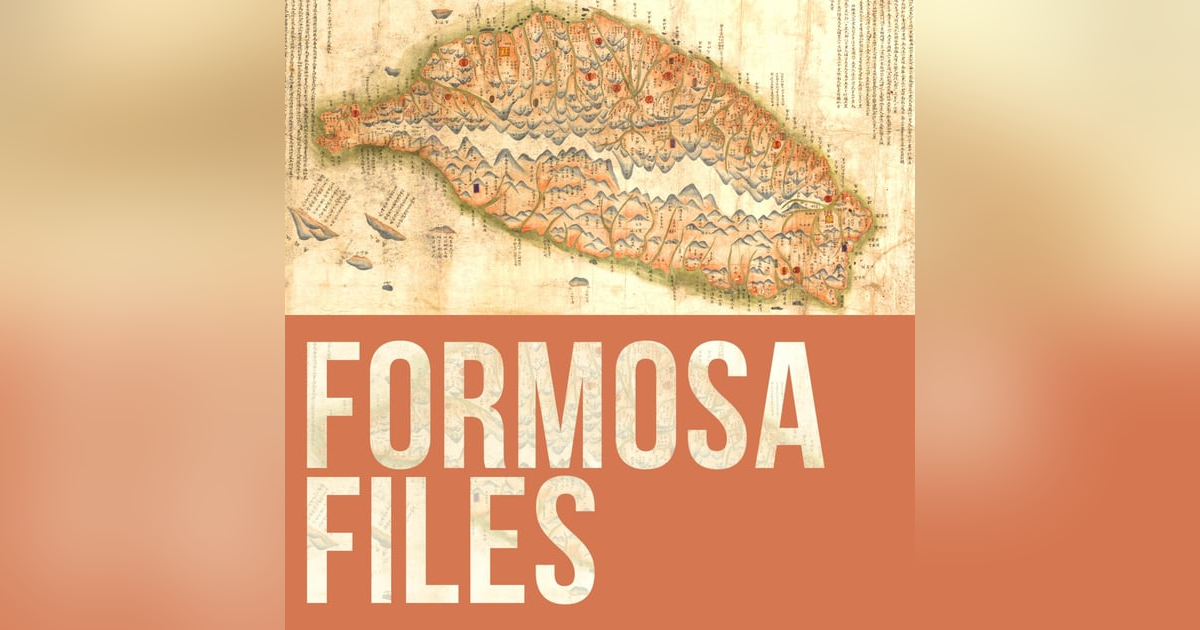S4-E26 - Bits and Pieces - October 2024

Did you know?
Joseph Stalin saved Chinese characters. (um… sort of) In Qing-era Taiwan, two men sometimes SHARED a wife! John has done 10 episodes of our other podcast, “Bookish Asia.” Plum Rain Press, the new publishing arm of Formosa Files, is about to release an epic historical novel by Dr. Chen Yao-chang 陳耀昌, the man behind the Netflix series Seqalu.
This week John and Eryk wander around a bit, give you some info, tell a few cool stories, and have a laugh or two in one of Formosa Files’ every-now-and-then “Bits and Pieces” episodes.
A BIG THANK YOU to all who have left a 5-star review, subscribed, and followed us on social media!
Cover shows - left: A propaganda poster from the early days of the PRC, when Mao and Stalin were still friendly (via Fight Back News). Center: the cover of the upcoming "Three Tribes in Dutch Formosa," an epic historical novel by Dr. Chen Yao-chang 陳耀昌 (via the Ministry of Culture). Background right: the tomb of Prince (or Lord) Ningjing (寧靖王) in Kaohsiung's Hunei District. Bottom right: Dr. Chen Yao-chang 陳耀昌.
From Reddit "Today I Learned": Mao Zedong (who was Mao Tse-tung before pinyin, under the “Wade-Giles” romanisation system) wanted a radical break with old ways after 1949, when the civil war ended in mainland China. He was hardly the first to think that China’s beautiful, complicated and inefficient script was a hindrance to the country’s development. Lu Xun, a celebrated novelist, wrote in the early 20th century: “If we are to go on living, Chinese characters cannot.”
But according to Mr Zhou, speaking to the New Yorker in 2004, it was Joseph Stalin in 1949 who talked Mao out of full-scale romanization, saying that a proud China needed a truly national system. The regime instead simplified many Chinese characters, supposedly making them easier to learn.
Taipei Times: Highways and Byways: Hunei: A prince’s final resting place, by Steven Crook
Below: An article on Hanyu Pinyin, a system mostly created by Zhou Youguang 周有光. The image is the front cover of The Language Revolution in Communist China by Tao-Tai Hsia, published in the Far Eastern Survey Vol. 25, No. 10 (Oct., 1956)
Below: Wiki examples of Cyrillic script letters (printed) and cursive (handwritten) variants. Via Wiki.
Link to our other podcast about books about Asia: BOOKISH ASIA.
Below: The cover of the upcoming book mentioned in this podcast "A Tale of Three Tribes in Dutch Formosa"
Do us a favor and rate/review the show! It really helps. Do it on Apple Podcasts or here on our website.
Write us with questions or ideas at formosafiles@gmail.com
AND THE BIGGEST REQUEST: tell others about this free, not-for-profit resource about Taiwan.













